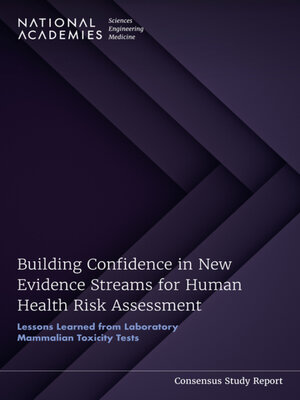Building Confidence in New Evidence Streams for Human Health Risk Assessment
ebook ∣ Lessons Learned from Laboratory Mammalian Toxicity Tests
By National Academies of Sciences, Engineering, and Medicine

Sign up to save your library
With an OverDrive account, you can save your favorite libraries for at-a-glance information about availability. Find out more about OverDrive accounts.
Find this title in Libby, the library reading app by OverDrive.



Search for a digital library with this title
Title found at these libraries:
| Loading... |
<p>As part of its core mission, the U.S. Environmental Protection Agency (EPA) is tasked with assessing the hazards and risks to human health from exposure to pollutants. While some pollutants are well studied, there are little or no data on the potential health effects for many thousands of chemicals that can make their way into the environment, such as PFAS. EPA still relies on laboratory mammalian studies as the foundation of most human health risk assessments, which are limited by high costs, long timelines, and other concerns. New approach methods (NAMs) in toxicology, for example new in vivo and in vitro strategies and computational systems biology, offer opportunities to inform timely decision-making when no data are available from laboratory mammalian toxicity tests or epidemiological studies. NAMs may also help inform efforts to protect susceptible and vulnerable populations by characterizing subtle health perturbations, better encompassing genetic diversity, and accounting for nonchemical stressors.</p>
<p>While the promise and need for NAMs is clear, many barriers to their use remain. This report aims to bridge the gap between the potential of NAMs and their practical application in human health risk assessment. Building Confidence in New Evidence Streams for Human Health Risk Assessment draws lessons learned from laboratory mammalian toxicity tests to help inform approaches for building scientific confidence in NAMs and for incorporating such data into risk assessment and decision-making. Overall, the report recommendations aim to ensure a seamless handoff from the evaluation of NAM-based testing strategies in the laboratory to the incorporation of NAM data into modern, systematic-review-based risk assessments.</p>






